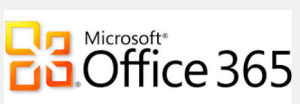
Whether you are a small or medium business, complex environment or perhaps requires project management and looking for a solution that’s not complicated to use in a daily basis and needs integration with multi-device, multi-platform and companion apps, Microsoft Office 365 will be best suited. This is the same Microsoft Office (Word, Excel, PowerPoint, Outlook, Access and Publisher) as if it was installed in your computer but has more useful programs, apps and features – i.e. online conferencing, public website, cloud storage and you can access Office 365 from any devices (PC, Laptop, Mac and Smart) virtually as long as you have internet connection.
Microsoft Office 365 is a cloud solution and comes together with powerful capabilities all in a single package. The best part, you don’t have to worry about updating the software; you’ll get the Office 365 automatic updates, maintenance and 24/7 technical support as long as you keep your subscription from Microsoft up-to-date.
Productivity – You can get a lot more done and able to access your work files virtually anywhere and whatever device you are using. You may use Office 365 to share and edit files at the same time with anyone in your office or team so that everybody can be productive.
Collaboration – Is Teamwork vital in your business environment? Are you a traveler or a remote employee that requires retrieving your work files in real-time and doing collaboration with your co-workers? The All-in-One package has everything you’ll need – email, files sharing, calendars sharing, IM and web conferencing for you and your team.
Compatibility – You don’t have to worry on what devices or Operating Systems you’ll have to use or implement in a near future, it will run in all Windows Operating Systems-Clients (except XP and older versions) and Servers (except 2003 and older versions) . Mac Users will also benefit from Office 365 as there are Apps available.
Integration – Office 365 integrates well with a variety of devices by simply installing the Apps for Mac, Windows and other Smart Devices with full access to your corporate files.
Convenient – Install the Office 365 Apps and carry the device in your pocket or purse whether it’s a smart phone or a Tablet. Dealing with daily work tasks and conveniently accessible for an employee is vital for business.
Security – If you are concerned about privacy and security, Office 365 is highly encrypted and rest assured that your email and documents will be virtually protected.
Cloud Storage – Afraid to lose your files? It’s safe to store confidential files using cloud storage and not to worry that next day or anytime that your computer would crash. If in the event that this happened, since your files are stored in the cloud, simply use another computer, log on to your business profile and continue to work on your files stress-free.
Easy Migration and Implementation – Office 365 can be effectively implemented without complications. Easy transition from a traditional Microsoft Office to the modern and sophisticated Microsoft Office with limited downtime.
Cost Effective – There’s no need to hire an IT person to manage the File Servers and purchasing costly hardware File Servers, it’s all taken care of in a single administration, cost-effective and will give you a Return on Investment (ROI).
Other great features – Having your own mail server can be daunting and expensive, Office 365 comes with Exchange Online and SharePoint Online if you’ll need collaboration with your team.
I use Office 365 and I really like the integration with all my devices – Windows 8 desktop, Windows 8.1 laptop, Windows 8 Phone and Surface 2 and also with other Microsoft Products that I’m currently using as I can manage all my work files anytime and virtually anywhere across the globe and you can’t go wrong with that. Although we host our Exchange Server, there’s no interruption neither any conflicts running Office 365 from my own experience. Find out if Office 365 is the right solution for your business, see the different options here.





